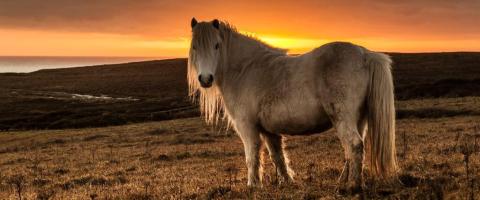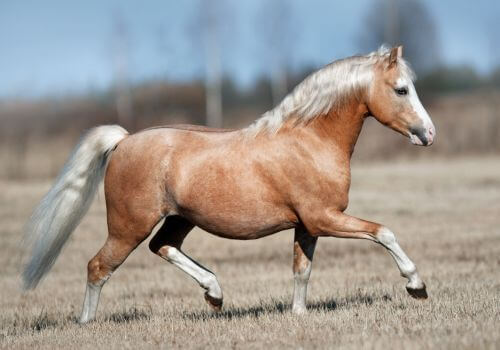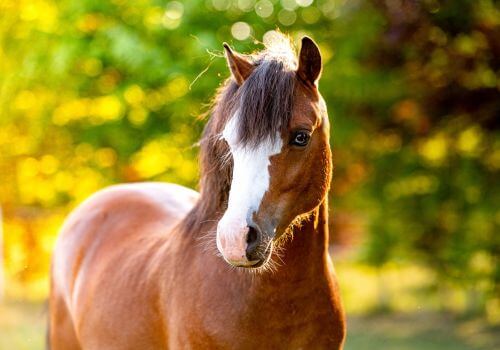
The Welsh Pony & Cob: Small but Mighty!
- Weight: 400 to 700 pounds
- Height: 12 hands (48 inches) to 15 hands (60 inches)
- Body Type: Sturdy, compact build; delicate features; expressive eyes; deep chest
- Best For: Riders and owners of all experience levels, including children
- Life Expectancy: 35 years

A Breed with Ancient Roots
Native to Great Britain, Welsh ponies and cobs are believed to have existed in Wales for thousands of years. While veterinarians don't know for certain, they likely developed from crossing native ponies with Arabian, thoroughbred, and hackney bloodlines. Their rugged terrain and harsh climate led to the evolution of strong, adaptable horses.
They first arrived in the United States in the late 1800s. Although their numbers declined during the Depression, their popularity surged again in the 1950s. The Welsh Pony and Cob Society was established in 1901 as a breed registry in Wales.
How Big is a Welsh Pony or Cob?
Welsh ponies and cobs are classified into four sections based on size:
- Section A: Welsh Mountain Ponies stand up to 12 hands high (48 inches).
- Section B: Ponies range from 12 to 14.2 hands high (48 to 57 inches).
- Section C: Cob-type ponies are up to 13.2 hands high (52.8 inches) with a more substantial bone structure.
- Section D: Cob-type horses exceed 13.2 hands (no upper height limit).
What Are Welsh Ponies Used For?
Originally bred for all-purpose use, Welsh ponies and cobs worked on farms, in the military, and for hunting and harness work. Today, they are popular in equestrian sports such as dressage, jumping, trekking, and general riding. Their versatility makes them a favorite choice for children and adults alike.
The Stunning Colors of Welsh Ponies
Welsh ponies and cobs come in many colors, including chestnut, bay, gray, black, palomino, dun, and roan. However, they do not come in piebald, skewbald, or leopard-spotted coat patterns. They may have white face and leg markings.
What Makes the Welsh Pony Special?
Welsh ponies and cobs are known for their hardiness and adaptability to harsh conditions. They are small yet incredibly strong and have a naturally friendly and social temperament.
Diet and Nutrition of a Welsh Pony
These ponies have adapted to thrive on limited forage, which makes their care relatively simple. However, overfeeding may result in obesity and laminitis. Their ideal diet consists of high-quality grass hay, minimal grain, and limited pasture access.
Common Health Issues of the Welsh Pony
Welsh ponies and cobs are generally hardy but are prone to laminitis, a serious hoof condition often caused by overfeeding or rich pasture. A well-balanced diet and exercise help prevent this condition and keep them in top form.
Grooming Tips for a Welsh Pony or Cob
Regular grooming keeps Welsh ponies and cobs healthy and comfortable. Brush their coat, mane, and tail to remove dirt and prevent tangles. Hoof care should be a daily routine to prevent infections or injuries and allow them to remain active.
Bringing It Back to the Barn
The Welsh Pony and Cob are hardy, versatile, and beloved for their beauty and temperament. Whether in the show ring, on the trail, or as a child’s first pony, they excel in various roles and continue to captivate horse enthusiasts worldwide.


